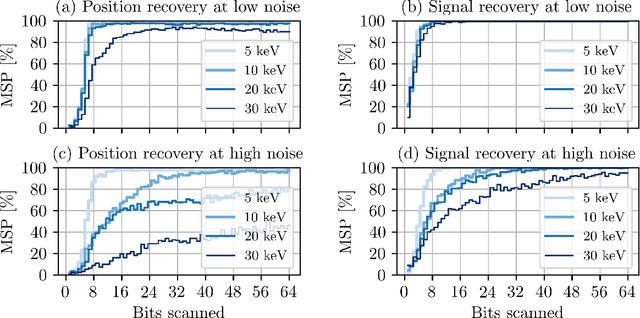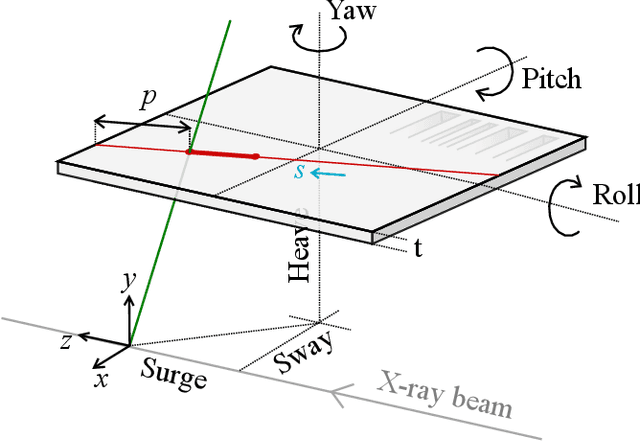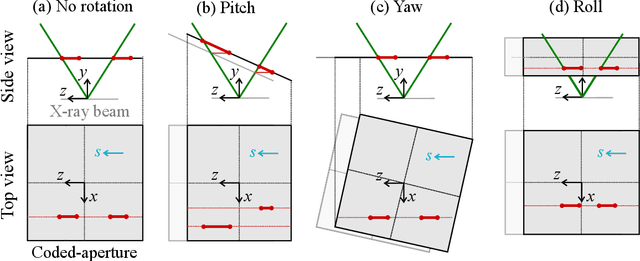Jonathan Tischler
Optimizing Coded-Apertures for Depth-Resolved Diffraction
May 21, 2024



Abstract:Coded apertures, traditionally employed in x-ray astronomy for imaging celestial objects, are now being adapted for micro-scale applications, particularly in studying microscopic specimens with synchrotron light diffraction. In this paper, we focus on micro-coded aperture imaging and its capacity to accomplish depth-resolved micro-diffraction analysis within crystalline specimens. We study aperture specifications and scanning parameters by assessing characteristics like size, thickness, and patterns. Numerical experiments assist in assessing their impact on reconstruction quality. Empirical data from a Laue diffraction microscope at a synchrotron undulator beamline supports our findings. Overall, our results offer key insights for optimizing aperture design in advancing micro-scale diffraction imaging at synchrotrons. This study contributes insights to this expanding field and suggests significant advancements, especially when coupled with the enhanced flux anticipated from the global upgrades of synchrotron sources.
Digital autofocusing of a coded-aperture Laue diffraction microscope
Aug 15, 2022



Abstract:To provide optimal depth resolution with a coded-aperture Laue diffraction microscope, an accurate position of the coded-aperture and its scanning geometry need to be known. However, finding the geometry by trial and error is a time-consuming and often challenging process because of the large number of parameters involved. In this paper, we propose an optimization approach to automate the focusing process after data is collected. We demonstrate the robustness and efficiency of the proposed approach with experimental data taken at a synchrotron facility.
 Add to Chrome
Add to Chrome Add to Firefox
Add to Firefox Add to Edge
Add to Edge